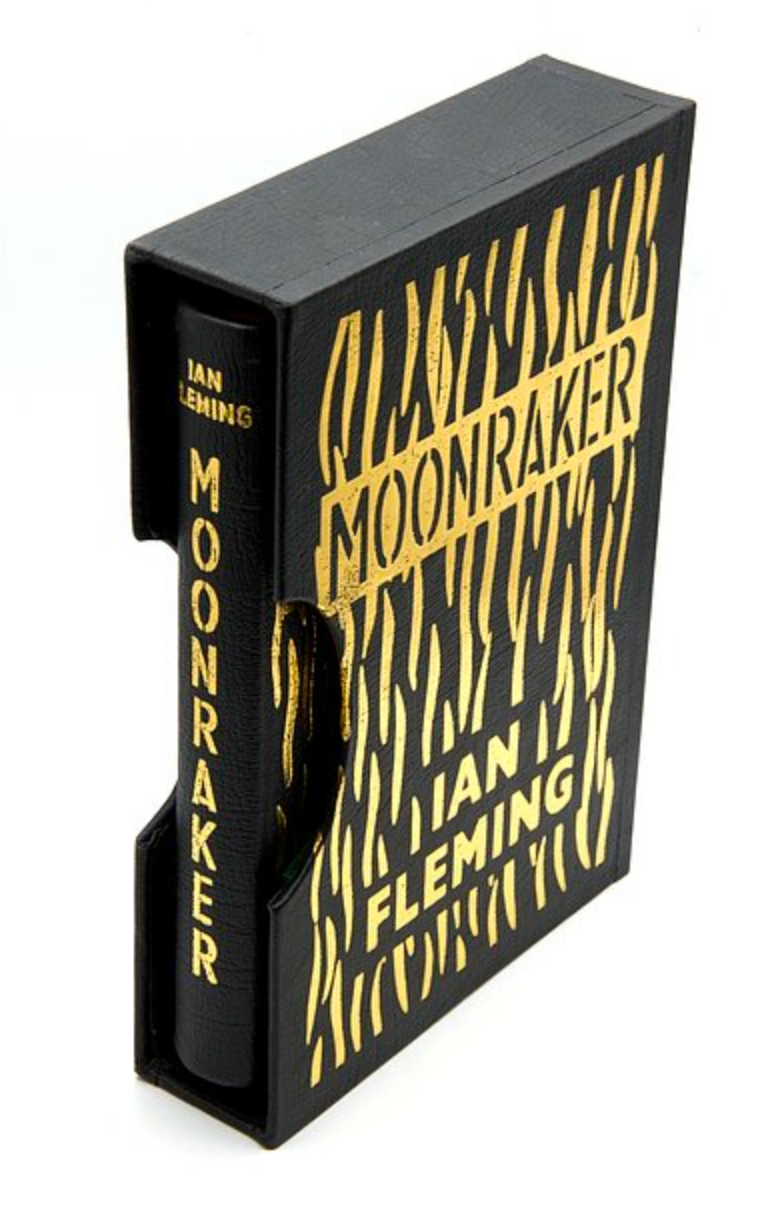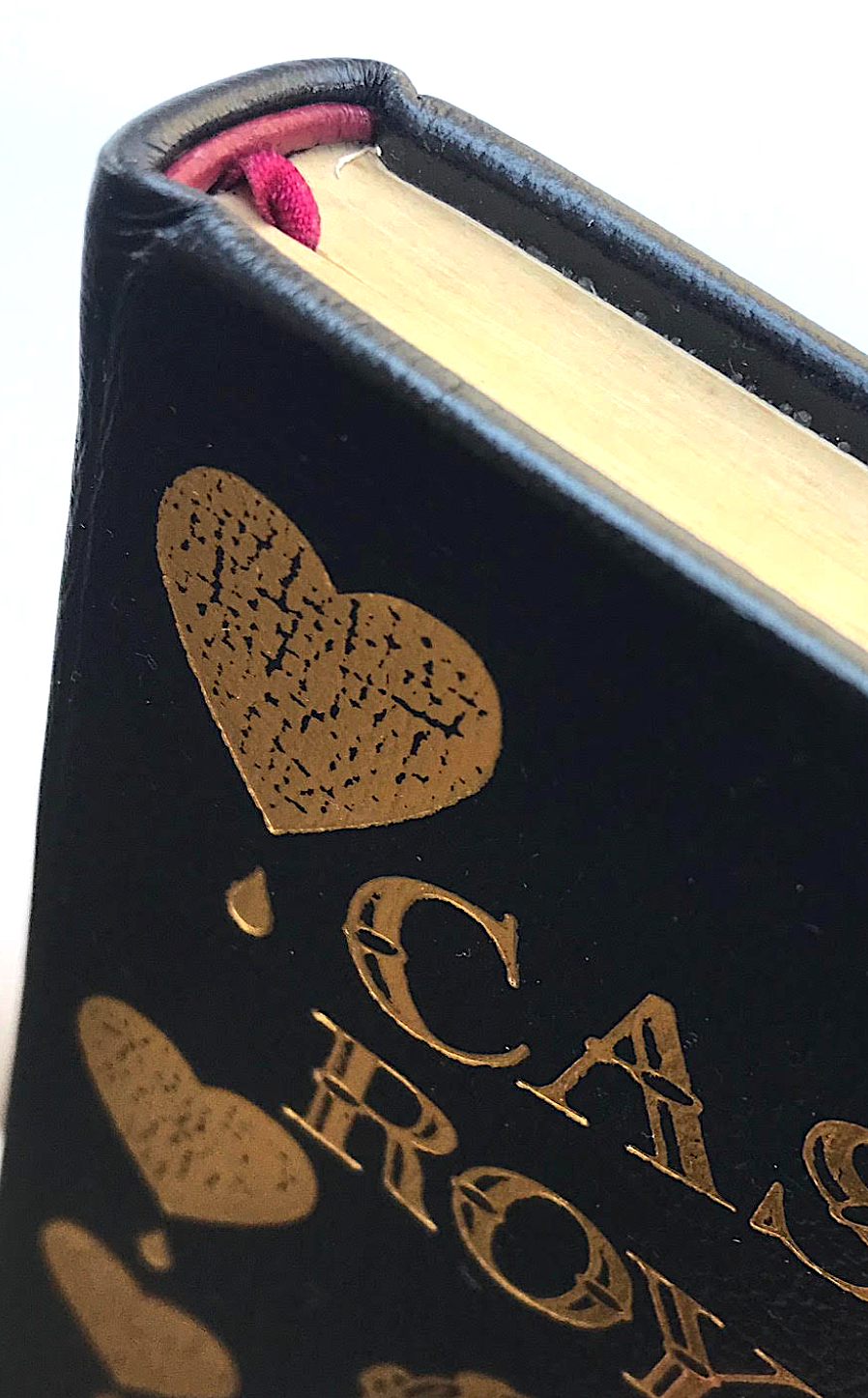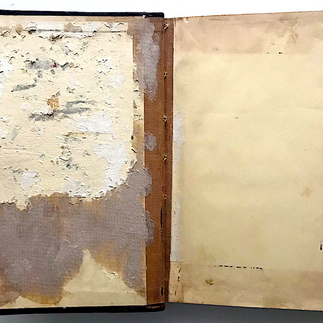Ian Fleming Rebinds: The story so far...
- Peter Crush
- Jun 27, 2024
- 9 min read
We're on a mission to design a compile a full set of Ian Fleming firsts editions - in beautiful gilt and leather. Eight books down, here's the story of how they've been made so far...

Today, few industries survive that are as unchanged as they were when they first began hundreds of years ago. And the fast-disappearing art of book binding is definitely one of them.
For as long as there have been books, there has been a need to bind them – so much so that in the 17th century, the leather industry was considered more important than the metal craft, with the supply of leather often failing to meet the demand for increasingly popular books.
Honed over hundreds of years, the craft of book binding is an extremely difficult one to learn. As a battered board hanging on the wall of Shepherds' Sangorski & Sutcliffe bookbindery proudly proclaims: "No machine has yet been invented which is able to do any of these operations as well as can be done by hand.” As a result the people who decide to do it are becoming a fast-endangered breed.
It’s no surprise really. To bind a book – I am confidently told – involves 36 separate processes; making it an extremely time-intensive occupation; one that requires a high degree of skill and an equally high level of training before one can be said to be competent. In the face of hundreds of other, more exciting-sounding jobs (and with lower barriers to entry), this ancient profession is one that can struggle to find new blood.
We need our binders:
At www.jamesbondfirsteditions.co.uk, we appreciate just how beautiful a bespoke leather-bound book is.
Not only are finely-bound books objects of desire in their own right, they are perfection in terms of form fulfilling function – protecting and presenting important books for generations to come.
It’s why we’ve been on something of a mission over the last few years.
For the last five years, working with one of the UK’s most respected book binders, we’ve been in the process of working our way through the entire Ian Fleming James Bond canon, by re-imagining the books (all first edition, first impressions), as finely-bound leather tomes.
Design-wise, the ambition is to recreate each book’s original dust-jacket design in gilt onto the face of each binding, complete with its faithfully-reproduced title and author’s name on he spine. Each book is then housed in a matching slipcase, featuring the same DJ design.
We’re saving battered books – and making something special
To collectors who balk at the mere thought of ruining a perfectly good first edition (especially the very early books, such as Casino Royale, Live & Let Die, Moonraker and the other 1950s titles), I can rest assure you that you need not worry.
The motivation for starting this project was seeing extremely distressed, damaged and (quite literally) falling-to-pieces books – those which were damaged to the point of disintegration – and deciding they needed saving, by giving them a new lease of life.
We started in 2019, buying a first impression Casino Royale. The donor book used was in precisely the shape described above.
When so few Casino Royale first impressions were printed in the first place (just 4,728 copies), and significantly fewer now survive to this day (maybe less than half), when I see a copy in such a state, an immediate urge to preserve it kicks in. I don't profess to be an expert in design, but by sticking to a few, key principles, we created our very first book.


We followed up Casino Royale with Live and Let Die, then Moonraker (above), and so on in the same order as Fleming wrote them.
Each time we started a new rebind, we ONLY used a book if it satisfied one (or all), of our own ‘rebinding rules’ (below) Today, we’re up to For Your Eyes Only, and have only the last six to go.
The rules are pretty simple when it comes to deciding whether to rebind an Ian Fleming first edition:
· VERY BAD BOARDS… The boards must be in an absolutely disgusting, and pitiful state; barely held together; broken, stained, or perished beyond repair. To be clear, we would NEVER rebind a book that was in perfectly good condition. That would be a travesty.
· ..GREAT INNARDS: While the boards must be truly shocking, it’s essential the inner pages need to be in very good or better condition (fine for the later books). We’re NOT in the business of rebinding books that have reading pages so bad, that no-one would want to own them.
· IF IT IMPROVES ON AN EXISTING REBIND: Some of the books we’ve rebound have already previously been rebound – for instance as library copies, or other privatly-bound (and badly-bound) books. We have absolutely no hesitancy rebinding a previously rebound book done badly! Here, this book has already been removed from its original boards and so we have the ability to improve it.
So, how are they made?
Our thinking for starting this project was as much to do with preservation as it was about presentation.
But we honestly believe these one-of-a-kind versions are visually stunning.
And so to showcase the skill of our bookbinder, we thought we’d reveal exactly what goes into producing each book.
Bad boards, good pages
Donor Casino Royale 1st impressions: all in poor 'outer' shape, but with good inner pages
Before our bookbinder starts his work, he needs a donor book to ‘deconstruct,’ and as per the rules above, we search for books whose exteriors have had it, but the inside the pages are extremely well preserved. Ninety-five percent of the time, when you see a book with badly damaged boards, it usually follows that the interior follows suit, but 5% of the time it doesn’t, and it’s these books that we search for.

Shown (above) are some of the boards we’ve used from donor Casino Royale first impressions – all previous rebinds – all of which were in absolutely awful condition; and yet, the inner pages are actually in very decent shape indeed. Also shown is our donor Goldfinger book - boards that were heavily split and frayed and damaged.
NOTE: For all of the books that have been taken apart, I've had absolutely no qualms about doing it.
For many, the outer condition was in a very poor state indeed.
Our donor Goldfinger
While some might say we’ve destroyed the historical aspect of any rebound book – by shedding it of its library binding history, for example – it’s my view that the Casino Royale’s we’re rebound all needed to be desirable again. In their existing state, they were not.
Blocking:
Once a book is identified (and purchased), the next preparatory task is designing the blocking that will be used to press the gilt into the leather (Buckram leather, bison grain).
Knowing that the book will be bound in black leather, design decisions are needed about which parts will be solid gold and which will be outlined in gold gilt, with the ‘black’ of the leather being used as the fill-in colour.


Casino Royale was relatively straightforward (see above). Everything in yellow on the original DJ was to be reproduced in gold, and for version 1 we decided to fill-in the red hearts too as gold gilt (a second version has followed – see later).
Others - however - needed a bit of thought:


The paper jacket of Moonraker (above), sees the word ‘Moonraker’ written in white lettering against a solid black box. We could have decided to copy this, by using the black of the leather as the black box (with a thin gold key-line around it), and having ‘Moonraker’ spelled out in gold gilt. But because the words ‘Ian Fleming’ also needed reproducing, these were the sensible choice for having as gold lettering, especially as we also need to run the gold flames around it. With ‘Ian Fleming’ having to be in gold lettering, we had to use the black of the leather to spell out the word Moonraker.


For Diamonds Are Forever, we had another similar design decision to make. Should the girl be an outline or fully blocked out? We decided an outline would not look good, because it would force other disctraction – such as the woman’s lips probably needing to be solid gilt, which would detract from the diamond necklace. In the end we decided to do a fully solid gold outline of the woman – as per the illustration – with detailing – such as hair and lips, being shown by the leather. This would test the skill of the binder pressing that much gold!


For other books – such as Dr No – tweaks were needed. This book presented the problem of how to show both the detail of the grassland, and the title of the book. Above was how we figured it out.
As you can see, each time we did a new book, the font lettering needed reproducing exactly. Save for Casino Royale – which uses a specific named font – a designer had to redraw the font from scratch. The same font – but sized differently – would be needed for the spine too.
Each book requires at least two metal blocks of aluminium (as a mirror negative), to be made – one for the face of the book (which reproduces the face of the jacket), and one for the spine.

For Goldfinger, we decided to pick out the red of the rose in red foil too. This required two plates for the face of the jacket – one for the section in gold, and one for the section in red.
The most intricate book we've made so far has required four separate blocking plates. This is the second version we've done of Casino Royale. Here there was the block needed for the spine, but then we introduced red hearts on the face of the book (two blocks are now needed for the face of the book). Finally, we needed a further block for the single red heart to appear on the actual book itself. This way, the book mimicked the boards, and the slipcase was the ‘jacket’.
Below is how some of the original artwork for producing the blocks actually looked.


Pressing the designs we've come up with into the leather itself, to create the gilt image, is yet another delicate job.
Each block needs painstakingly mounting in a frame, packed out with other pieces of metal, and then put into a pressing arm so that the block is lined up to exactly where the image need to be.
For a single pressing, the process is relatively straightforward, although larger areas may not always press sharply the first time round. Often several attempts are needed (with much leather wastage involved). Even if things go well, around 1sq metre of leather is used per book/slipcase.
The press is also a hot press, where the block is heated up to imprint the gilt/foil on the leather. Some books have required several attempts to get this right.

Where there is a secondary image – such as with the red hearts on Casino Royale (left), or the red rose on Goldfinger, two passes on the same piece of leather are needed – each with a different block: one for everything in pressed in gold gilt, and one for everything in red foil, and here, getting everything lined up is even more precarious.
The gold part is typically done first, and then the red-foil block needs fixing so that it exactly lines up against the existing gold image. Any movement means the images won’t layer-up properly, and the whole process needs repeating from scratch.
Once the pressing of the leather has been taken care of (including adding the gilt to the spines – again, no room for mistakes here, as it’s all a single piece of leather that’s used for the face and spine of the book), it’s time for the pages of the book itself to be dealt with.

The donor book begins its transformation by being carefully broken apart, with the boards removed leaving just he stitched pages.
(See left, what's left of For Your Eyes Only once the pages are removed).
Any remnants of glue on the spine are removed, and new endpapers are added.

The spine is re-glued, and strengthened if necessary, and new boards are cut.
New headbands and a ribbon is then added and everything is put together into a book press and glued together.
The spine is lined – with new card and the whole book is then ready for the leather being added.
When opened up, some Fleming books have been found to be stitched, while others are perfect-bound – sometimes as a result of already being rebound, but also differences in the way the book was originally put together.
At this point, the book really starts to take shape, with the leather stretched across and folded and fixed to the new boards. This is then press-dried to ensure complete adhesion.


From here it’s a case of… well, making the cases (see pics above) – the inner compartment first, lined with flock-line green material, followed by the outer leather box.
This has also been gilt stamped on the back, displaying the title of the book. This process alone can take a day to two days.
The question is, is it all worth it?
I'm biased here, of course, but I believe so.
We've taken books likely to suffer a slow and painful deterioration, rescued them, and turned them into books people will once again treasure and love.
They are unabashedly a passion project, but each book we make is one book saved from an uncertain future.
We now have the blocks for more than half of the books now, and we vow to complete the set over the next year.
So, if you have a sorry-looking Ian Fleming first that you would like to have rebound, we would be only too pleased to help you.
Contact us for more information.






Comments